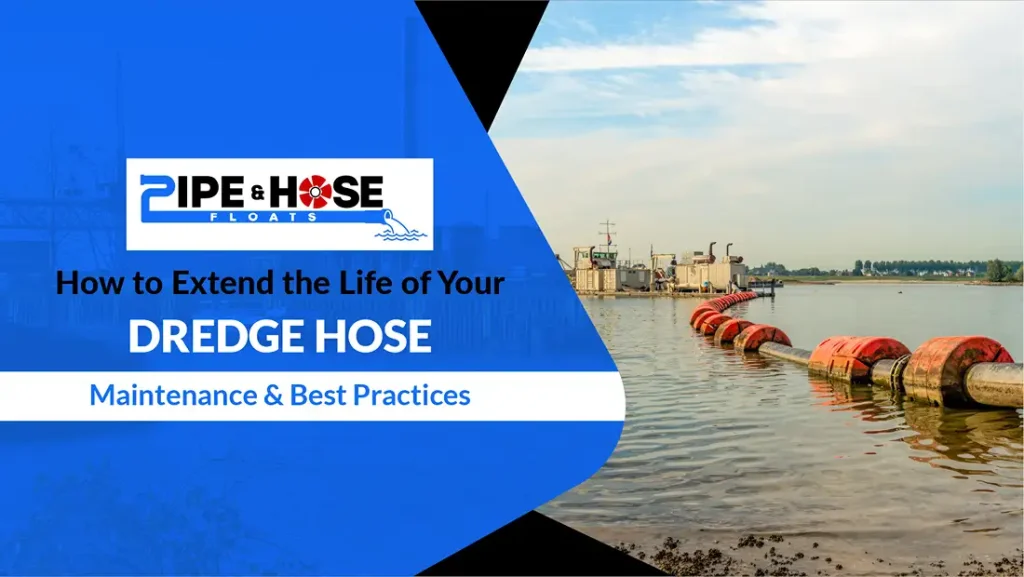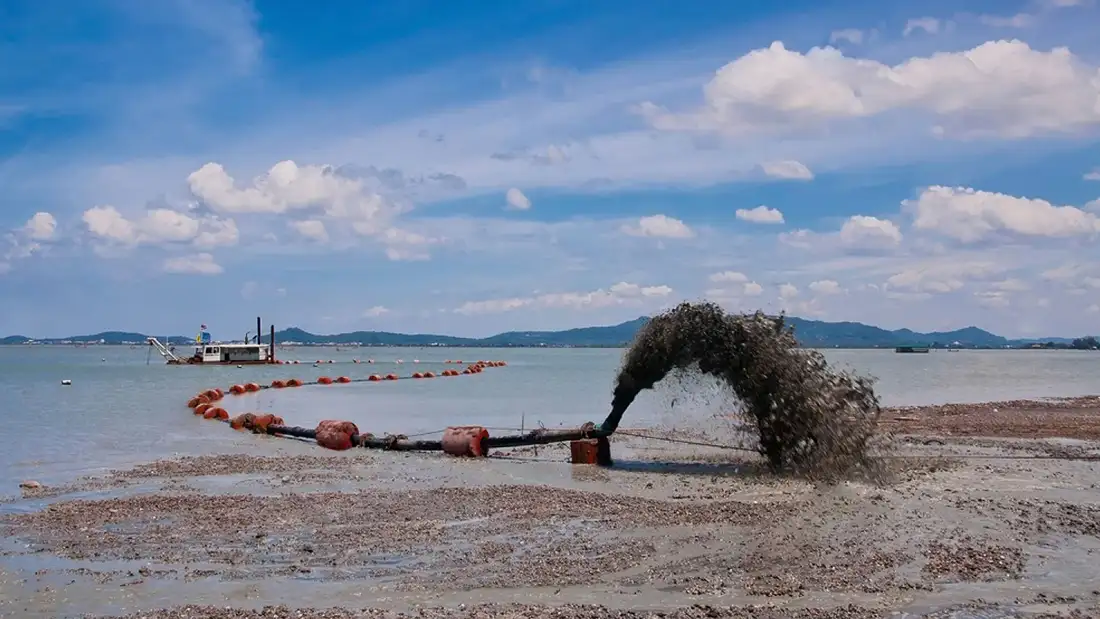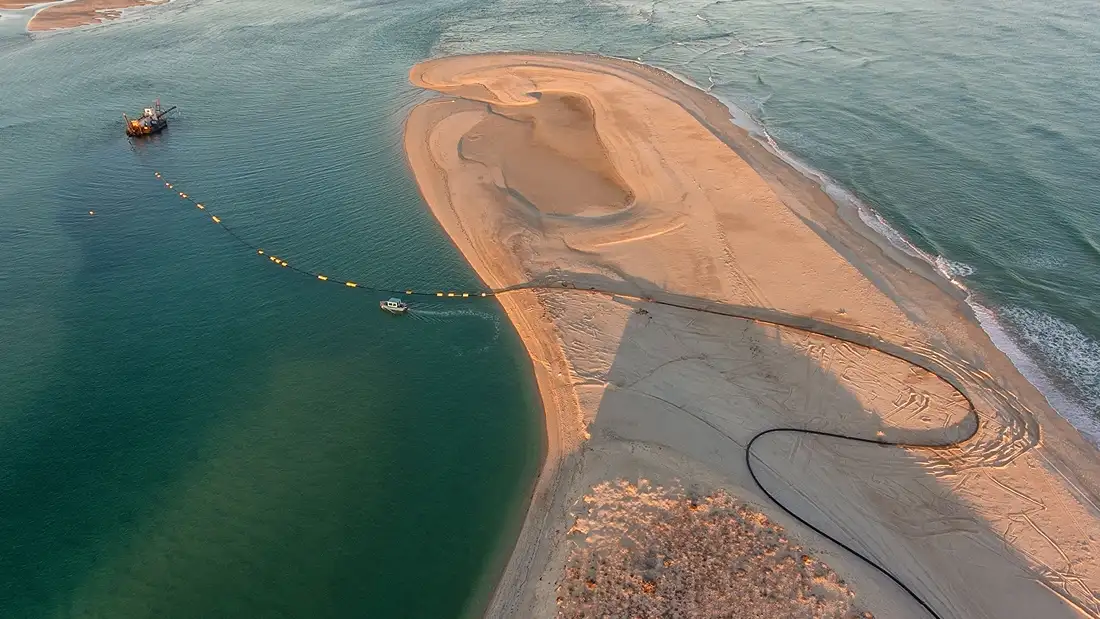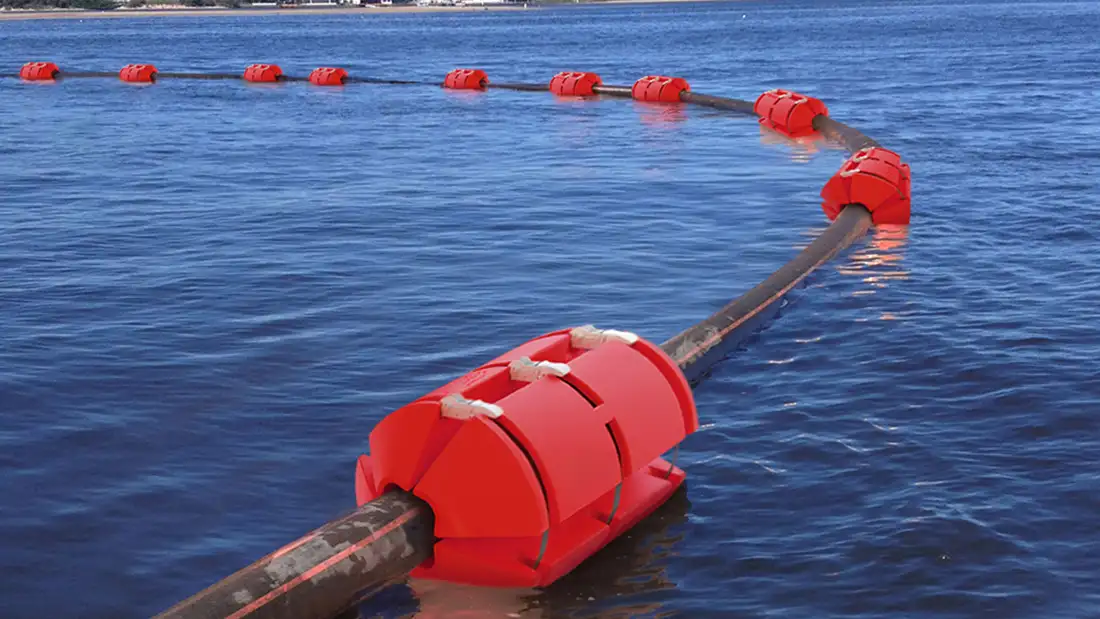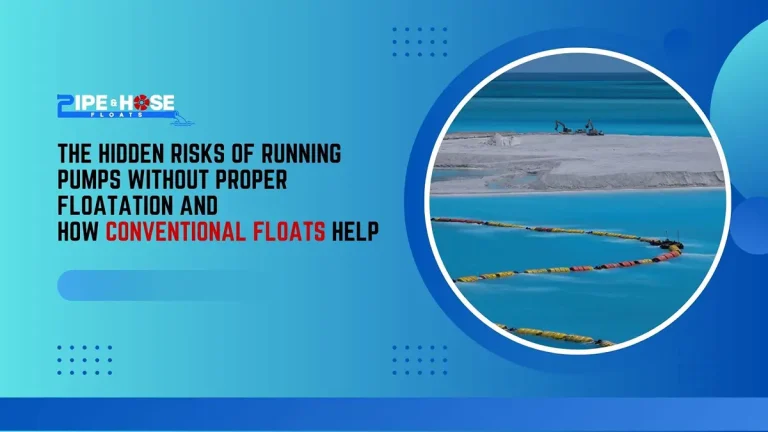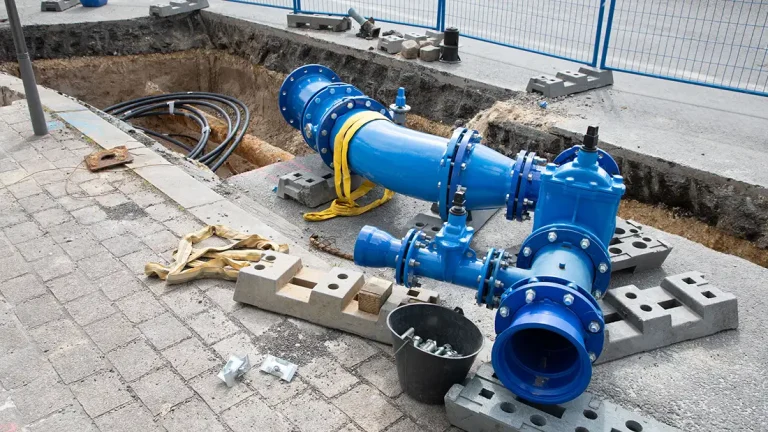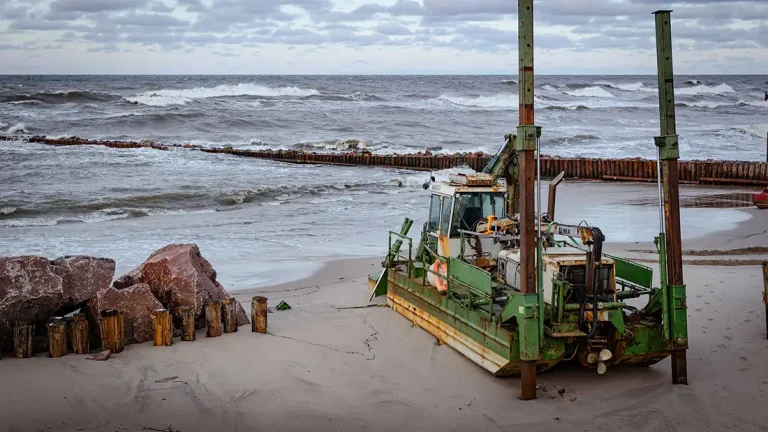Dredge hoses have an important role in sectors including mining, oil and gas, and heavy construction. These specialist hoses are critical for delivering slurry, silt, and high-pressure materials in conditions that demand excellent durability and performance. Whether in a mining operation, an offshore dredging project, or a large-scale construction site, the dependability of your dredge hose is crucial to maintaining efficient operations and reducing hazards.
In industries such as mining, oil, and gas extraction, as well as the dredge industry, hoses are exposed to extreme conditions, including abrasion, chemical exposure, high-pressure flows, and temperature fluctuations. These factors can lead to wear and potential failure of the hose if not properly maintained. In particular, poorly chosen or inadequately maintained hoses can result in costly downtime, safety hazards, and disrupted workflows. For example, in applications where a 2-inch dredge hose is used, improper maintenance could quickly compromise its lifespan, leading to expensive repairs and project delays.
To mitigate these challenges, extending the life of your dredge hose is essential. By adopting the best practices in hose maintenance and ensuring you select the right type of dredge hose for your application, industries can significantly reduce the likelihood of failures and costly downtime. A focus on maintaining the performance of your dredge hoses, whether they’re standard or specialized 2-inch dredge hoses, leads to improved operational efficiency and higher ROI over time. This proactive approach ensures fewer emergency replacements and better asset management, ultimately contributing to a more profitable operation.
Best Practices for Dredge Hose Maintenance
The dredge hose must be properly maintained to last as long as possible and to avoid operational inconvenience. Following recommended practices, whether using a 2-inch dredge hose for minor applications or larger hoses for more demanding activities, can help maximize hose performance and reduce the likelihood of early failure. Industries can significantly enhance the durability of their dredging hoses by prioritizing proper installation, implementing protective measures, and conducting regular inspections.
1. Proper Hose Installation and Routing
The installation and routing of dredge hoses are critical to their longevity. Avoid sharp bends, corners, and areas of friction, as these can increase wear and cause damage to the hose over time. For example, when using a 2-inch dredge hose, it’s important to ensure it is not subjected to excessive pressure or sharp turns that could lead to kinks or ruptures. Secure the hoses using padded clamps or hose guides to reduce vibration stress and prevent unnecessary abrasion.
2. Use of Protective Sleeves and Guards
Dredge hoses are constantly exposed to harsh operating environments, which can result in wear, UV degradation, and chemical damage. Protective sleeves, spiral guards, and abrasion-resistant wraps act as shields to protect the hose’s surface from physical damage and environmental factors. This is especially crucial for hoses used in high-impact industries like dredging and mining, where hoses face continuous exposure to rough conditions. Whether it’s a 2-inch dredge hose or a larger model, using protective coverings will help significantly extend the hose’s service life.
3. Maintain Cleanliness
Cleaning your dredge hoses after usage is an important maintenance step to ensure they perform efficiently. After each operation, rinse the hose with clean water or a solvent indicated by the manufacturer to remove any debris, silt, or chemical residue. Contaminants within the hose can cause internal wear, clog fittings, and early failures. Draining water or fluids from the hose entirely under freezing temperatures reduces the chance of freezing and subsequent damage, hence preserving the hose’s integrity.
4. Regular Inspection and Monitoring
Regular visual inspections are essential for identifying early signs of wear and damage before they become major issues. Look for cracks, bulges, leaks, or signs of corrosion, especially at hose connection points and areas where clamps are used. For example, a 2-inch dredge hose may show signs of wear more quickly due to its smaller size and higher pressure demands. Monitor the hose’s flexibility and stiffness over time, as changes in these characteristics can indicate the onset of internal degradation. Keeping detailed records of hose usage, repairs, and replacements can help track its lifespan and ensure timely action is taken to prevent unexpected failures.
By incorporating these maintenance best practices, companies can improve the lifespan and performance of both 2-inch dredge hoses and larger dredge industry hoses. Regular care and attention to hose conditions will help reduce downtime and prevent costly repairs, leading to a more efficient and cost-effective operation.
Performance Optimization Strategies
Maximizing the performance and lifespan of your dredge hose requires more than routine maintenance; it demands a proactive approach to system design, fluid management, and operational discipline. Whether you’re working with a large dredge industry hose or a compact 2-inch dredge hose, optimizing performance helps reduce costly failures, extend service intervals, and improve return on investment (ROI) across demanding industrial applications.
1. Proper Operating Conditions
One of the most overlooked causes of dredge hose failure is operation beyond its rated pressure or temperature limits. Every dredge hose is engineered with specific tolerances, and exceeding these limits, especially in high-pressure slurry or abrasive media transfer, can dramatically shorten its service life. Whether using a heavy-duty dredge industry hose on a mining site or a 2-inch dredge hose in a smaller municipal application, always operate within the manufacturer’s specifications. This reduces stress on hose materials and lowers the risk of ruptures or blowouts.
2. Fluid Filtration and Maintenance
Clean system fluids are essential for preserving the internal integrity of a dredge hose. Contaminants such as grit, rust, or chemical residues can degrade the inner lining of the hose, especially over long-term use. Implementing high-quality filtration and regularly changing filters can prevent internal abrasion and chemical attack. This is particularly important in systems where the dredge hose is part of a hydraulic or slurry circuit. Well-maintained fluid cleanliness improves hose performance and reduces premature failure, especially in high-wear environments common to the dredge industry.
3. Pressure and Leakage Testing
Regular testing is vital for verifying hose performance and identifying potential weaknesses before they lead to costly failures. Use safe testing methods, typically water or low-pressure air, to check for leaks, swelling, or compromised fittings. Pre- and post-installation testing is especially recommended for high-value projects where even a single hose failure can result in operational delays or environmental risk. For smaller assemblies using a 2-inch dredge hose, routine pressure checks help ensure consistency and prevent undetected leaks that may go unnoticed until major damage occurs.
By integrating these performance optimization strategies, operators can significantly enhance the reliability of their dredge hoses and reduce unplanned downtime. From improving fluid cleanliness to enforcing proper pressure limits, each measure contributes to a longer-lasting, more efficient dredge hose system, no matter the scale of your operation.
Common Dredge Hose Failures and How to Prevent Them
Understanding the most frequent causes of dredge hose failure is essential for preventing unplanned downtime and costly equipment replacement. Whether you’re managing large dredge industry hoses on offshore projects or relying on a 2-inch dredge hose for more compact applications, knowing what to look for and how to prevent it can drastically improve system reliability and operational efficiency.
1. Abrasion and Crushing
External abrasion or crushing is a typical failure mode for dredge hoses. These hoses are frequently routed through difficult terrain, dragged across construction sites, or exposed to vehicle and machinery traffic. Without sufficient protection, the hose’s outer coating can soon wear away, exposing reinforcement layers and resulting in rupture.
To avoid this, divert dredge hoses away from high-traffic areas if feasible. Use physical barriers, raised supports, or safety ramps in work areas. Installing spiral wraps or abrasion sleeves can also protect the hose from mechanical damage. Even a 2-inch dredge hose can benefit from these safeguards in smaller systems, particularly in settings prone to frequent movement or handling.
2. Chemical or Electrochemical Degradation
Exposure to incompatible fluids or corrosive chemicals can weaken the internal lining and fittings of a dredge hose. Electrochemical reactions between dissimilar metals or between the hose material and transported media can also accelerate degradation, especially in saltwater or industrial slurry applications.
To prevent this type of failure, always select a dredge hose that’s compatible with your system’s fluid media. For operations involving aggressive or corrosive materials, verify chemical resistance ratings for both the hose and its fittings. Using manufacturer-recommended components and regularly inspecting for internal wear can prevent premature degradation and extend hose life.
3. Kinking and Tight Bends
Improper handling or installation that results in tight bends or kinks can cause the internal walls of a dredge hose to crack or delaminate over time. This is especially problematic with smaller-diameter hoses, such as 2-inch dredge hoses, which are more susceptible to collapse under bending stress.
Always observe the minimum bend radius specified by the hose manufacturer. Avoid tight loops or sharp angles during installation and storage. Where tight routing is unavoidable, use hose supports or elbows designed to maintain a consistent radius and reduce mechanical strain on the hose body.
By identifying and addressing these common failure modes, operators can significantly reduce maintenance frequency and extend the service life of their dredge hoses. Preventative action not only safeguards equipment but also ensures smoother operations and better overall project performance.
Cost-Saving Benefits of Proper Dredge Hose Maintenance
Investing in the maintenance of your dredge hose isn’t just about preventing failure; it’s a strategic decision that delivers measurable cost savings and long-term value. Whether you’re overseeing the performance of large-scale dredge industry hoses or managing smaller systems with 2-inch dredge hoses, proper maintenance reduces operational disruptions, extends equipment life, and improves your bottom line.
1. Reducing Downtime
Unplanned downtime is one of the most expensive side effects of dredge hose failure. A single hose rupture in high-output settings such as mining, oil & gas, or marine dredging can disrupt operations, cause project delays, and require emergency repairs or part replacements. These disruptions not only reduce production, but they also result in overtime labor expenditures and equipment rental fines.
Routine inspections, pressure testing, and regular upkeep can help businesses spot wear or damage before it causes a shutdown. Keeping your dredge hoses in good condition ensures a continuous workflow, fewer emergency repairs, and more efficient use of manpower and machinery.
2. ROI Through Prolonged Hose Lifespan
Extending the life of your dredge hose translates directly into cost savings over time. A well-maintained dredge industry hose can last significantly longer than one that is neglected or improperly installed. For 2-inch dredge hoses, which are often used in smaller but frequent applications, routine care prevents repetitive replacement and lowers total ownership costs.
Regular maintenance, including proper storage, cleaning, and routing, protects your investment and reduces the frequency of replacements. In many cases, businesses that adopt a proactive maintenance strategy find that they can cut hose replacement budgets by 20% to 40% annually.
3. Fewer Emergency Purchases and Repairs
Emergency hose failures often result in rush orders, expedited shipping fees, and last-minute installation costs. These unplanned expenses can exceed the cost of scheduled maintenance many times over. By extending the life of your dredge hose through strategic upkeep, you reduce the need for unplanned purchases and the associated premium costs.
This predictability improves operational and financial stability in sectors with tight timetables and logistics. Preventative care also allows procurement teams to better prepare for inventories and avoid the risk of stockouts on crucial components such as dredge hoses and fittings.
Dredge hose maintenance is more than simply a technical need; it is also a cost-control measure. For businesses that rely on high-performance dredging industry hoses or smaller-scale systems that utilize 2-inch dredge hoses, proactive maintenance yields considerable ROI due to fewer failures, longer service intervals, and improved resource allocation.
Strategic Hose Maintenance for Long-Term Success
Effective dredge hose maintenance is more than a routine task; it’s a critical component of operational strategy in sectors where reliability, uptime, and cost control are essential. Whether you’re managing large dredge industry hoses on complex dredging projects or working with a 2-inch dredge hose in municipal or small-scale operations, implementing a structured maintenance approach ensures long-term performance and measurable returns.
1. Recap of Key Maintenance Principles
Proper installation and routing lay the groundwork for effective hose maintenance. Dredge hoses should not be kinked, bent beyond their rated radius, or subjected to excessive mechanical stress to retain structural integrity. Protective sleeves and abrasion guards enhance surface durability, particularly in demanding environments such as mining and maritime construction.
Routine visual inspections and pressure testing can detect early indicators of deterioration, such as fractures, leaks, or hardness. Cleaning hoses after each use and keeping them in cool, dry conditions helps to avoid internal and external damage. These procedures are especially useful in increasing service life for systems employing smaller hoses, such as 2-inch dredge hose, due to their increased handling frequency and pressure sensitivity.
2. Strategic Asset Management
Treating dredge hose as tracked assets rather than consumables can yield substantial operational advantages. By logging installation dates, repair history, and operating hours for each dredge hose, engineering and maintenance teams can anticipate replacement needs, avoid sudden failures, and improve budget forecasting.
This strategy also improves alignment with procurement plans. Instead of reacting to catastrophes, teams may plan replacements, unify requirements across projects, and negotiate better pricing for large or planned purchases.
3. Supporting System-Wide Efficiency and Safety
A well-maintained dredge hose system supports broader goals of operational efficiency and workplace safety. Hose failures don’t just cause downtime; they can result in hazardous spills, equipment damage, or worker injuries. Adhering to these maintenance best practices helps organizations meet environmental compliance standards and reduce safety risks on-site.
Whether deploying a rugged dredge industry hose in offshore dredging or managing a compact 2-inch dredge hose in confined spaces, consistent upkeep supports uninterrupted workflow, safer job sites, and lower total cost of ownership.
By embedding hose maintenance into your overall equipment reliability strategy, your organization strengthens its ability to deliver on project goals while controlling costs and minimizing risk, one dredge hose at a time.
Final Thoughts: Maximizing Dredge Hose Performance Through Maintenance
In high-demand sectors like mining, oil and gas, marine, and municipal infrastructure, the performance and reliability of your dredge hose directly affect project timelines, equipment integrity, and overall operating costs. Whether you’re working with a heavy-duty dredge industry hose or a more compact 2-inch dredge hose, the principles of proper installation, regular inspection, and preventative maintenance remain the same and essential.
Organizations can extend the life of their hoses, avoid unplanned downtime, and save money in the long run by applying the best practices recommended in this guide. More significantly, considering dredge hoses as strategic assets rather than disposable components results in safer operations, improved resource planning, and a higher return on investment.
In the modern, competitive industrial world, proactive dredge hose maintenance is more than simply good practice; it’s a wise business choice.
For expert advice on selecting and maintaining the right dredge hose for your operation, contact our team today, your trusted partner in durable, high-performance hose solutions.

